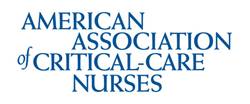Newswise — Introducing patients to an unfamiliar clinical intervention begins with providing the clinical evidence, standardized education and clear protocols for their healthcare team.
That idea was one of the key drivers behind development of evidence-based guidelines for the implementation of awake self-prone positioning (ASPP) for patients with COVID-19 at ChristianaCare, a three-hospital health system in the Delaware region that has 1,500 beds.
Prone positioning has become a common intervention in COVID-19 units for patients with acute respiratory distress syndrome (ARDS), with a bedside team carefully repositioning an intubated patient onto their abdomen to improve oxygenation.
ASPP, on the other hand, involves nonintubated patients turning themselves with minimal assistance, while they receive supplemental oxygen through a high-flow nasal cannula or noninvasive ventilation. As the pandemic progressed, ASPP was increasingly used for COVID-19 patients with early signs of respiratory failure as a therapeutic modality that could potentially improve outcomes, would do no harm and could be provided safely in ICUs and other units.
“Awake Self-Prone Positioning: Implementation During the COVID-19 Pandemic” details how ChristianaCare developed evidence-based guidelines for ASPP, with accompanying clinician and patient education materials, during the early days of the pandemic. The article, in the October issue of Critical Care Nurse (CCN), includes key findings of the research related to prone positioning and ASPP, as well as a sample of the ASPP education materials.
Co-author Erin Hare, MSN, CCRN, is a nursing professional development specialist for the medical intensive care unit (MICU) and rapid response teams (RRTs) at ChristianaCare’s Christiana Hospital.
“At ChristianaCare, we seek new knowledge, and we continually look for ways to innovate,” Hare said. “As the COVID-19 pandemic spread, we recognized how we could adapt awake self-prone positioning to help improve the outcomes of our patients. We also quickly developed policies, procedures and education to advance this treatment to our entire health system, so more patients could benefit.”
From March 18, 2020, when the first patient with COVID-19 was admitted to ChristianaCare, through Aug. 5, 2020, the hospital had 1,000 COVID-19-related patients admitted. Of these, 272 patients received a high-flow nasal cannula, with 111 having documentation of ASPP.
Initially, RRT nurses in the MICU were the first to start implementing the ASPP intervention in patients with COVID-19, during RRT calls and proactive patient rounds. As the number of patients with COVID-19 grew between March and June, the rate of RRT calls from the COVID-19 units increased approximately 40%.
The RRT nurses worked closely with unit charge nurses and intermediate-care nurses to introduce ASPP and help them implement the new process with patients. But as the number of patients with COVID-19 increased in ICUs and non-ICU areas, ASPP recommendations and implementation began to vary, and more questions about the procedure arose.
Nursing professional development specialists and clinical nurse specialists moved quickly to expedite the development of standardized clinical education and clear, concise evidence-based instructions and considerations that team members could easily apply at the bedside.
The clinical education plan included didactic learning followed by hands-on demonstration of ASPP, as well as where and how to document the patient’s position in the electronic medical record.
Patient education is a crucial component of ASPP, and patients who are generally asymptomatic early during the course of the disease may not understand how quickly respiratory distress can arise and become serious. The urgency and importance of protecting their lung function can seem excessive while their symptoms are seemingly minor.
Nurses use multiple educational methods to meet the learning needs of each patient. These include video conversations via tablets that are provided to each patient, as well as written materials with instructions. Interpreters are also available via the tablets, and all printed materials were made available in English and Spanish.
Outcome data specific to this intervention is limited for now, but initial findings are positive. The ASPP guideline has become an established part of caring for patients with COVID-19 and is fully integrated into practice in units caring for them.
As the American Association of Critical-Care Nurses’ bimonthly clinical practice journal for acute and critical care nurses, CCN is a trusted source of information related to the bedside care of critically and acutely ill patients.
Access the article abstract and full-text PDF by visiting the CCN website at http://ccn.aacnjournals.org.
About Critical Care Nurse: Critical Care Nurse (CCN), a bimonthly clinical practice journal published by the American Association of Critical-Care Nurses, provides current, relevant and useful information about the bedside care of critically and acutely ill patients. The award-winning journal also offers columns on traditional and emerging issues across the spectrum of critical care, keeping critical care nurses informed on topics that affect their practice in acute, progressive and critical care settings. CCN enjoys a circulation of more than 130,000 and can be accessed at http://ccn.aacnjournals.org/.
About the American Association of Critical-Care Nurses: For more than 50 years, the American Association of Critical-Care Nurses (AACN) has been dedicated to acute and critical care nursing excellence. The organization’s vision is to create a healthcare system driven by the needs of patients and their families in which acute and critical care nurses make their optimal contribution. AACN is the world’s largest specialty nursing organization, with more than 130,000 members and over 200 chapters in the United States.
American Association of Critical-Care Nurses, 27071 Aliso Creek Road, Aliso Viejo, CA 92656;
949-362-2000; www.aacn.org; facebook.com/aacnface; twitter.com/aacnme
